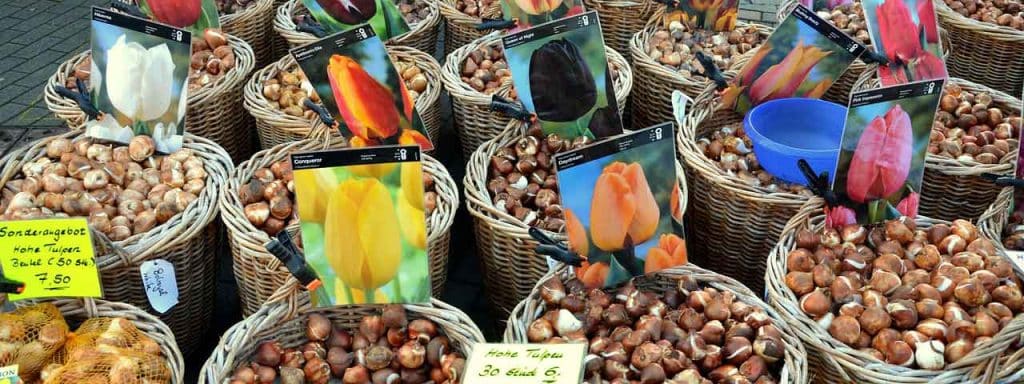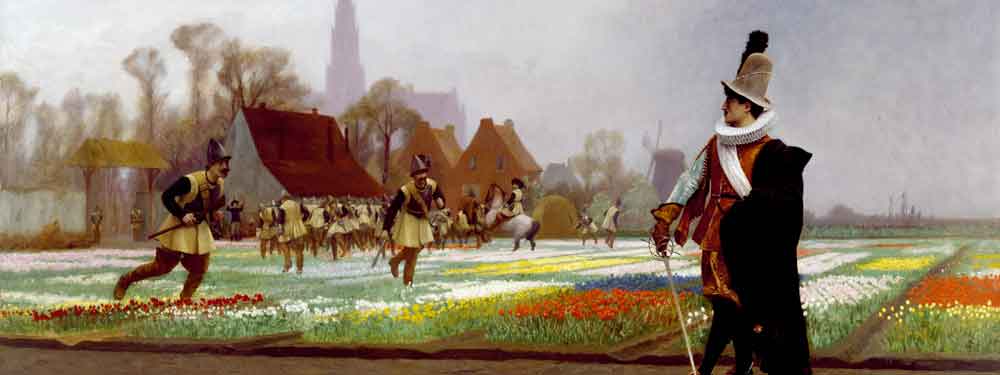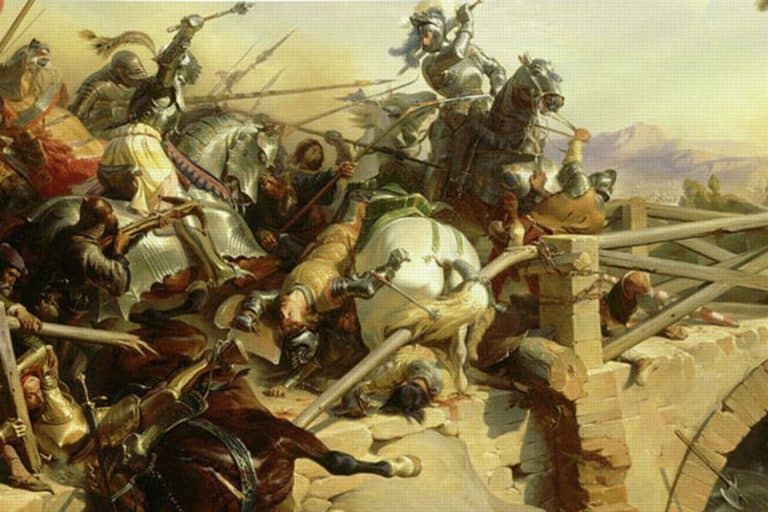Petals of Profit: The Rise and Fall of Tulip Mania in the 1600s
Tulip mania is considered one of the most bizarre economic stories in recorded history. In the early 17th century, a tulip bubble occurred in the Netherlands, a common flower. It all began when the first people admired the beauty of tulips, including some regular citizens. The speculative bubble began when traders kept buying tulip bulbs at ever-higher prices, convinced they would only rise; the whole country became caught up in the mania. However, as with all speculative bubbles, it burst, leading to financial ruin.

The Introduction of Tulips to Holland
Tulips are thought to have arrived in Europe via Ogier de Busbecq in 1554, though there is no way to know for sure. Busbecq received the first tulip bulbs from the Ottoman Empire and sent them to Vienna. The flowers spread to various cities across Europe, including Amsterdam. However, it would not be until Dutch botanist Carolus Clusius planted tulip bulbs at the University of Leiden in 1593 that they would take off in the Netherlands. Clusius found that the flower could successfully grow in colder, harsher climates, such as the Low Countries. The popularity of the flower soon spread throughout the region.
The tulip boom came at a perfect time for the Netherlands, as Dutch wealth peaked during the Golden Age. The Dutch Republic had recently gained independence from Spain and was one of the wealthiest nations in the world thanks to trade and commerce. The trade in the East Indies brought extreme wealth to the merchants of Amsterdam, and they sought a way to show off their newfound success. Enter the tulip, with its extremely saturated colors and a look that cannot be matched by any other European flower.
The Dutch Republic was at the height of its wealth, which would only further drive demand for tulips. The flower became more than a status symbol, as the more bulbs were traded, the more extravagant the tulips became. Tulip prices began to rise, and this would only lead to Tulip Mania, a bubble economy that would come to an all-too-familiar halt.

The Rise of Tulip Varieties and the Beginnings of Trading
By the early seventeenth century, tulips were being identified by several different varieties. These included single-colour tulips known as Couleren (red, yellow, and white varieties). It was the multicoloured tulips, however, that were the object of desire among the upper-class Dutch. Rosen tulips were streaked with white on red or pink petals, while Violetten tulips were streaked with white on purple or lilac petals.
The most striking and unusual were the Bizarden tulips, streaked yellow or white on red, brown, or purple petals. It was eventually determined that the tulip-breaking virus caused these multicoloured streaks. The unusual variegated effects of this virus created an exotic appearance that would drive up demand and prices for tulips.
Growers often gave imposing names to the new tulips they developed, a practice that became competitive among growers. The first tulips developed were given names such as Admirael (admiral), which would usually be followed by the name of the person who bred the tulip. Admirael van der Eijck, for example, was one of approximately 50 varieties that were so titled. General was another familiar name used during this period, and later varieties would be given the title Admiral of Admirals or General of Generals.
The prices rose steadily, mainly due to increased demand. Tulip trading happens during the six months when the plant is dormant, from June to September. At this time, the bulbs could be dug up and transported without any problems, so the above-ground part of the tulip plant had withered away. This created an active spot market for tulip bulbs.
Trading, however, was also taking place outside these six months. Florists and tulip traders were beginning to sign forward contracts with each other before a notary, agreeing to buy tulips at the end of the growing season. This system of forward contracts and the long-lasting nature of tulip bulbs would create the speculative market that would bring about the Tulip Mania bubble.

The Rise and Bust of the Tulip Market
In the mid-1630s, tulip prices continued to climb. The bulbs’ prices rose as traders and collectors sought rare and unique varieties. As rarer varieties became available, and the tulip market continued to expand, it became attractive to speculators.
The market began to change in 1636, as speculators seeking to make a quick buck entered. Tulip prices, even for “unbroken” bulbs, began to increase day after day. Tulip contracts began to be traded in taverns, with tulip traders agreeing to sell bulbs to each other in the future, never actually handling bulbs at all. The tulip market was being driven by windhandel, or “wind trade,” as no bulbs were changing hands. Even the rarest bulbs were rumored to go for ten times the average yearly wage.
In February 1637, the tulip market reached its peak. Prices had grown to such a height that traders could no longer find anyone to buy from, and demand for tulips crumbled overnight. The paper market suddenly replaced the bulb market. Traders who had never intended actually to purchase bulbs now found they had contracts for tulips worth only a fraction of what they had paid. The market was now flooded with sellers and few buyers. Traders who had been on the “buying” end of contracts had now lost up to ten times more than the current price of a bulb, and traders who had only sold contracts were stuck with paper with no worth.
The Dutch government was forced to step in to prevent the market from destroying itself. The government allowed traders to break their contracts if they paid a 10 percent fee, but it did little to stop the disaster. Courts refused to take action on tulip-related cases because the debts were considered gambling losses. Traders across the Netherlands were left with bulbs they could not sell, and the country tried to determine how much more damage the government’s inaction could cause.
The Aftermath of Tulip Mania and Legislative Response
The conclusion of Tulip Mania was devastating for those who were invested in the trade, particularly at the bubble’s peak. The financial loss spread through the Dutch Republic, at the height of its Golden Age prosperity, but overall damage was less than feared. For many investors, the personal loss was extreme, particularly for those who traded at the bubble’s height. The economic damage to the general population of the United Provinces was minimal, however, as the tulip trade (much publicized as it was) accounted for only a small fraction of the Dutch economy, which was based on maritime trade and industry. The Dutch Republic proved itself as a premier power economically by withstanding the effects of the great financial crisis.

Local Dutch governments and courts worked to regulate and recover from the crash. Many traders at the time refused to honor the inflated contracts agreed at the height of the mania, leading to court cases. The Dutch government implemented policies where contracts could be voided or paid for at a fraction of their original value, particularly for those bulbs that had been purchased at the peak of the bubble. The loss of many merchants to bankruptcy was avoided.
A broader economic impact of Tulip Mania in the United Provinces was a general shift in approach to the country’s trade and business. The Dutch Republic’s financial prosperity was not significantly reduced. However, a general wariness of investing in speculation and a more regulated market became a primary trend.
Tulips in Modern Dutch Culture
Today, tulips have a very different meaning to the Dutch. The flower has become a national symbol of beauty and cultural heritage, not a sign of a market bubble about to burst. The country is famous for its tulip fields that bloom every spring, drawing crowds of tourists from all over the world. The annual Keukenhof Gardens flower festival highlights the historic and enduring appeal of tulips. This event underscores how a small European country has become a world leader in horticulture.
Tulip Mania is still often referred to as a cautionary tale of an irrational market bubble. However, the tulip itself has become an enduring emblem of Dutch pride and beauty, a reminder of the time when these two things came so close to colliding.







